Déjà View
![]()
Architecture has been highly subjected to the photographic gaze since the inception of photography and has only intensified with the ubiquity of digital platforms. As both disciplines are deeply embedded in the business of image production, conversations about representational ambiguity and digital mediation continue to complicate the relationship between architecture and photography. The photographic image’s ongoing struggle with objectivity calls for a re-examination of these disciplines which operate behind a camera that doesn’t exist.
Déjà View problematizes the relationship between architecture and photography, destabilizing the idealized reference of architectural photographic documents. Using the tectonics of Julius Shulman's iconic photographs of the Stahl house, the highly imaged living room is reconstructed twice in Knowlton’s Banvard Gallery. The exhibition corrupts Koenig's design both photographically and spatially, re-positioning the Stahl house between its sensationalized image and built configuration.
Déjà View problematizes the relationship between architecture and photography, destabilizing the idealized reference of architectural photographic documents. Using the tectonics of Julius Shulman's iconic photographs of the Stahl house, the highly imaged living room is reconstructed twice in Knowlton’s Banvard Gallery. The exhibition corrupts Koenig's design both photographically and spatially, re-positioning the Stahl house between its sensationalized image and built configuration.
2022
Solo exhibition at The Ohio State University, Knowlton Hall, Banvard Gallery
April 15, 2022 – July 15, 2022
Sponsors:
Crate & Barrel
FedEx
Hopkins Printing
Ohio State University Libraries
Project / Install Team:
Ryan Carlton, Jyae McWilson, Noel Michel, Kendra Mosley, Noah Nicolette, Allison Summers, Alonzo Waugh
https://knowlton.osu.edu/events/2022/04/deja-view
360 Virtual Tour
Solo exhibition at The Ohio State University, Knowlton Hall, Banvard Gallery
April 15, 2022 – July 15, 2022
Sponsors:
Crate & Barrel
FedEx
Hopkins Printing
Ohio State University Libraries
Project / Install Team:
Ryan Carlton, Jyae McWilson, Noel Michel, Kendra Mosley, Noah Nicolette, Allison Summers, Alonzo Waugh
https://knowlton.osu.edu/events/2022/04/deja-view
360 Virtual Tour

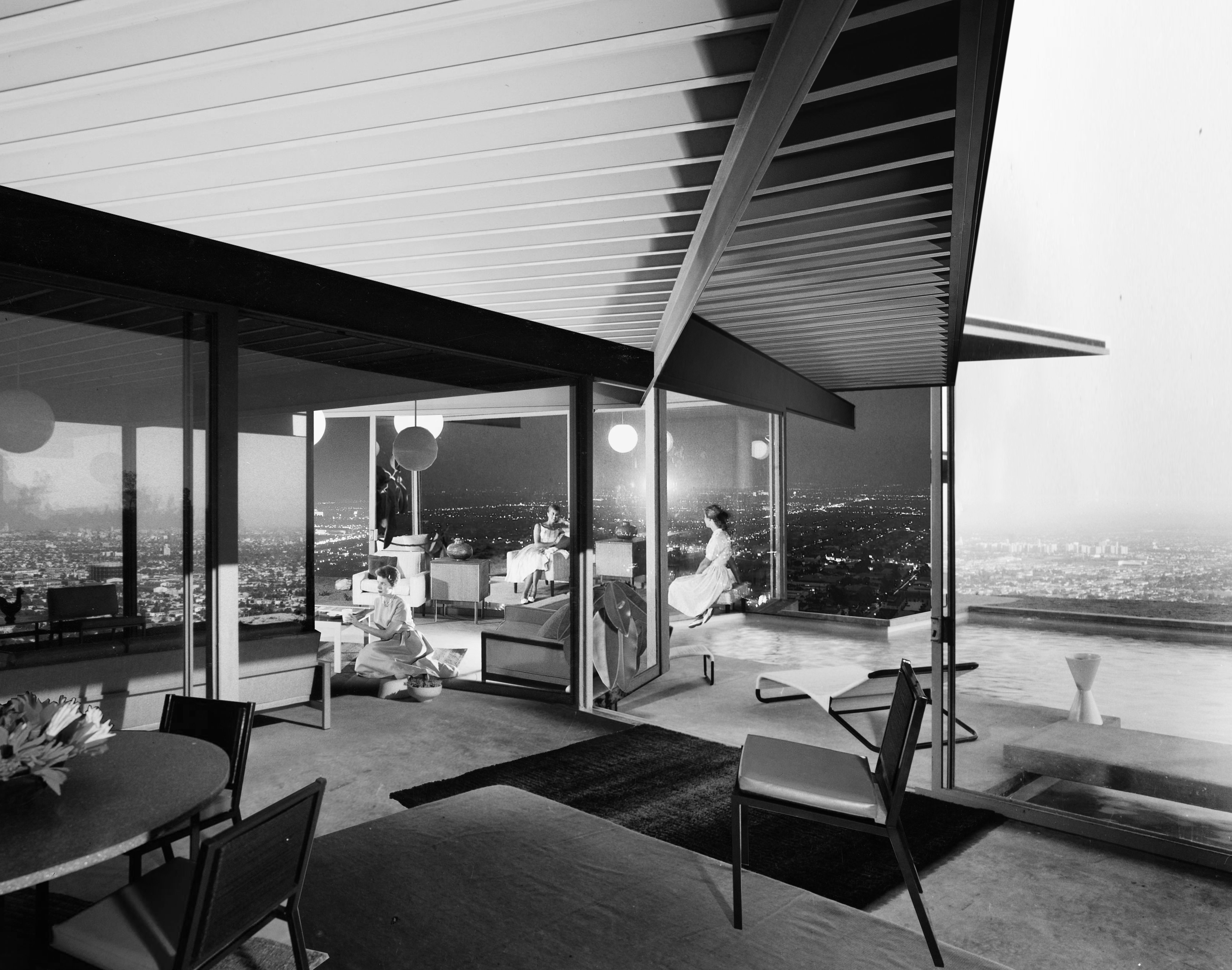
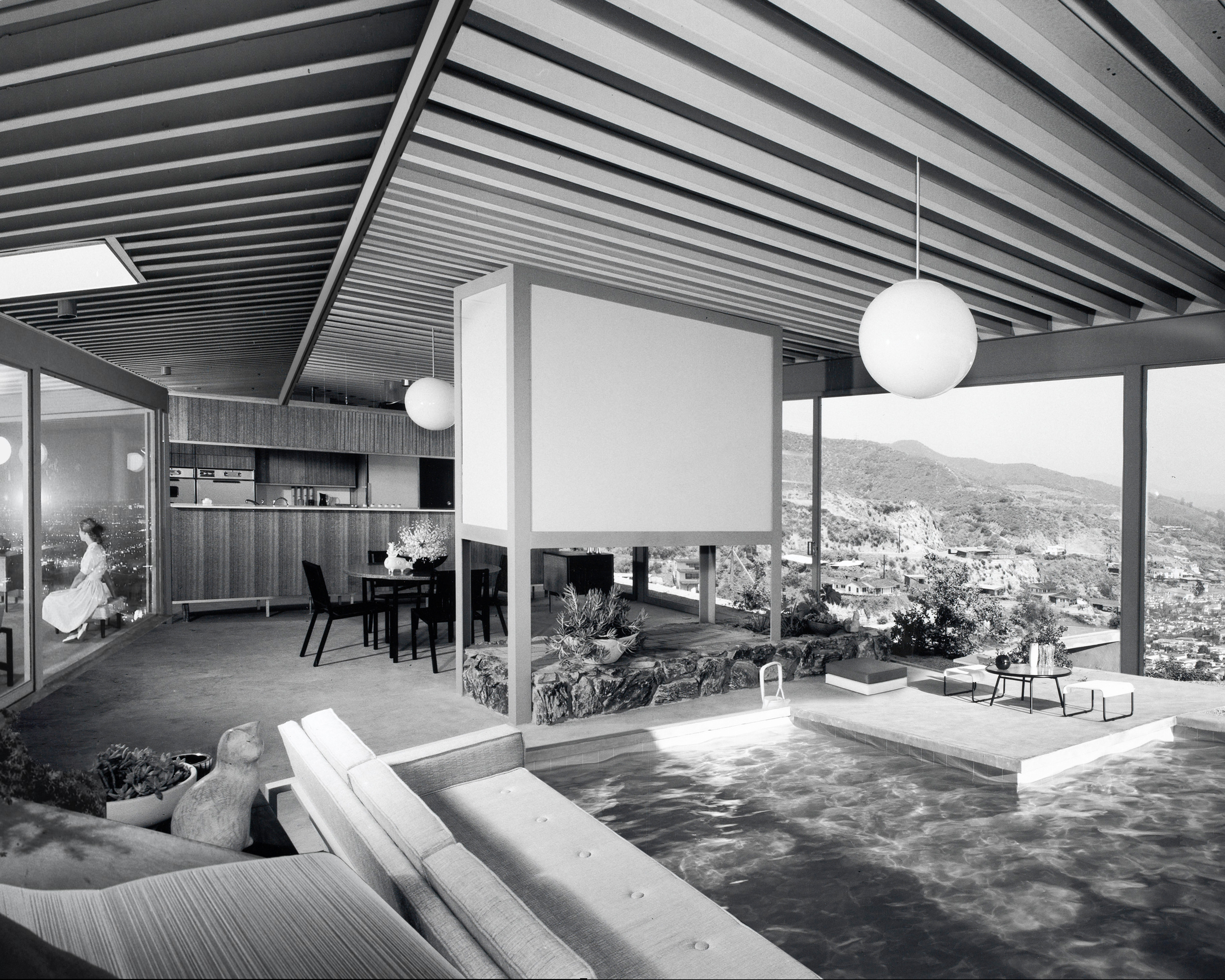

Julius Shulman’s iconic photograph of Pierre Koenig’s Stahl House (Case Study House No. 22 ) is one of the most celebrated architectural photographs of the 20th century.
Photographed on the evening of May 9, 1960, the scene of Cynthia Murfee and Ann Lightbody conversing over the Los Angeles cityscape would become the defining image of the Case Study House program. It’s widely agreed upon that the photograph has achieved greater fame than the physical house – unlike most architectural projects, Shulman’s photographs prevail as the primary exhibiting
Photographed on the evening of May 9, 1960, the scene of Cynthia Murfee and Ann Lightbody conversing over the Los Angeles cityscape would become the defining image of the Case Study House program. It’s widely agreed upon that the photograph has achieved greater fame than the physical house – unlike most architectural projects, Shulman’s photographs prevail as the primary exhibiting
documents for the Stahl House in lieu of conventional architectural drawings.
With exception to a few rarely seen ‘Case Study House Program Style’ constructed perspectives, a prescribed furniture layout is absent in Koenig’s drawings of the Stahl House. The house was also incomplete and unoccupied on the day it was to be photographed, leaving the house’s spatial organization in the hands of the photographer. Shulman’s overall placement of rental furniture has remained to this day.
With exception to a few rarely seen ‘Case Study House Program Style’ constructed perspectives, a prescribed furniture layout is absent in Koenig’s drawings of the Stahl House. The house was also incomplete and unoccupied on the day it was to be photographed, leaving the house’s spatial organization in the hands of the photographer. Shulman’s overall placement of rental furniture has remained to this day.




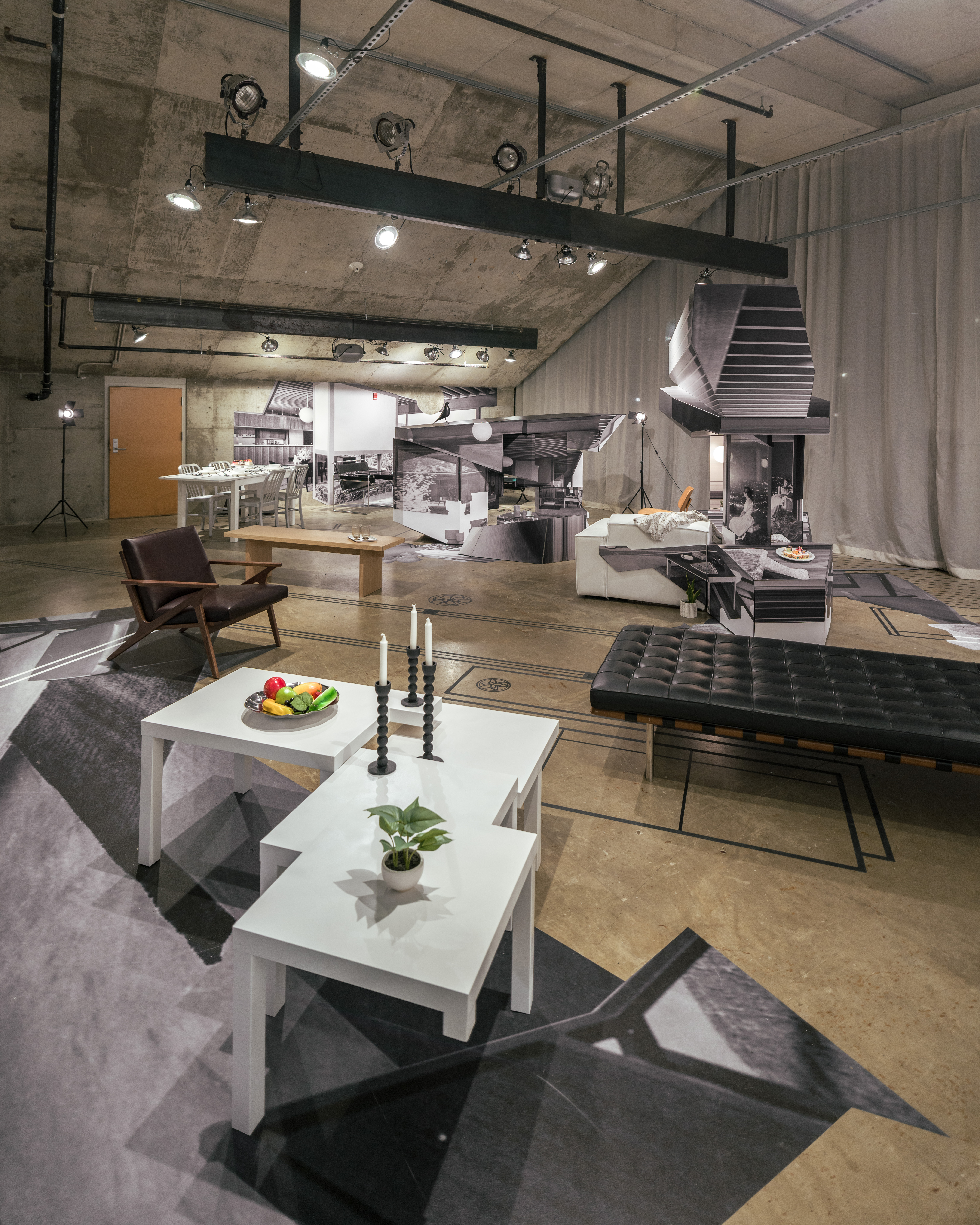
Embedded hierarchies of imaged subjects and objects are broken down into photographic fragments and rearranged. New photographic seams are created, scrambling the original photographs in a way that challenge the assumed qualities of objects represented.
These photographic fragments are further transformed when enlarged to full scale, three dimensionalized, and forced to reckon with the gallery space. Multiple realities are merged together when the fragments redeployed into the original floor plan – an altered version of the Stahl House living room emerges, where the physical and flattened oscillate between object and graphic.
These photographic fragments are further transformed when enlarged to full scale, three dimensionalized, and forced to reckon with the gallery space. Multiple realities are merged together when the fragments redeployed into the original floor plan – an altered version of the Stahl House living room emerges, where the physical and flattened oscillate between object and graphic.
The combination of photography, entourage, and orthography uncovers the discrepancies between architectural and photographic subjects, highlighting the multiple lives a project can have in photographic documents. Different versions of the Stahl House living room based on their photographic configurations are merged, where fragments of the photographic frame intersect with physical objects and full-scale orthographic drawings. The scaleless characteristics of photographs and lens-based distortions lead to hybrid two and three-dimensional conditions, creating new formal, visual, and spatial relationships. The photographic image itself becomes the subject, where scenes are staged with the photographs themselves.


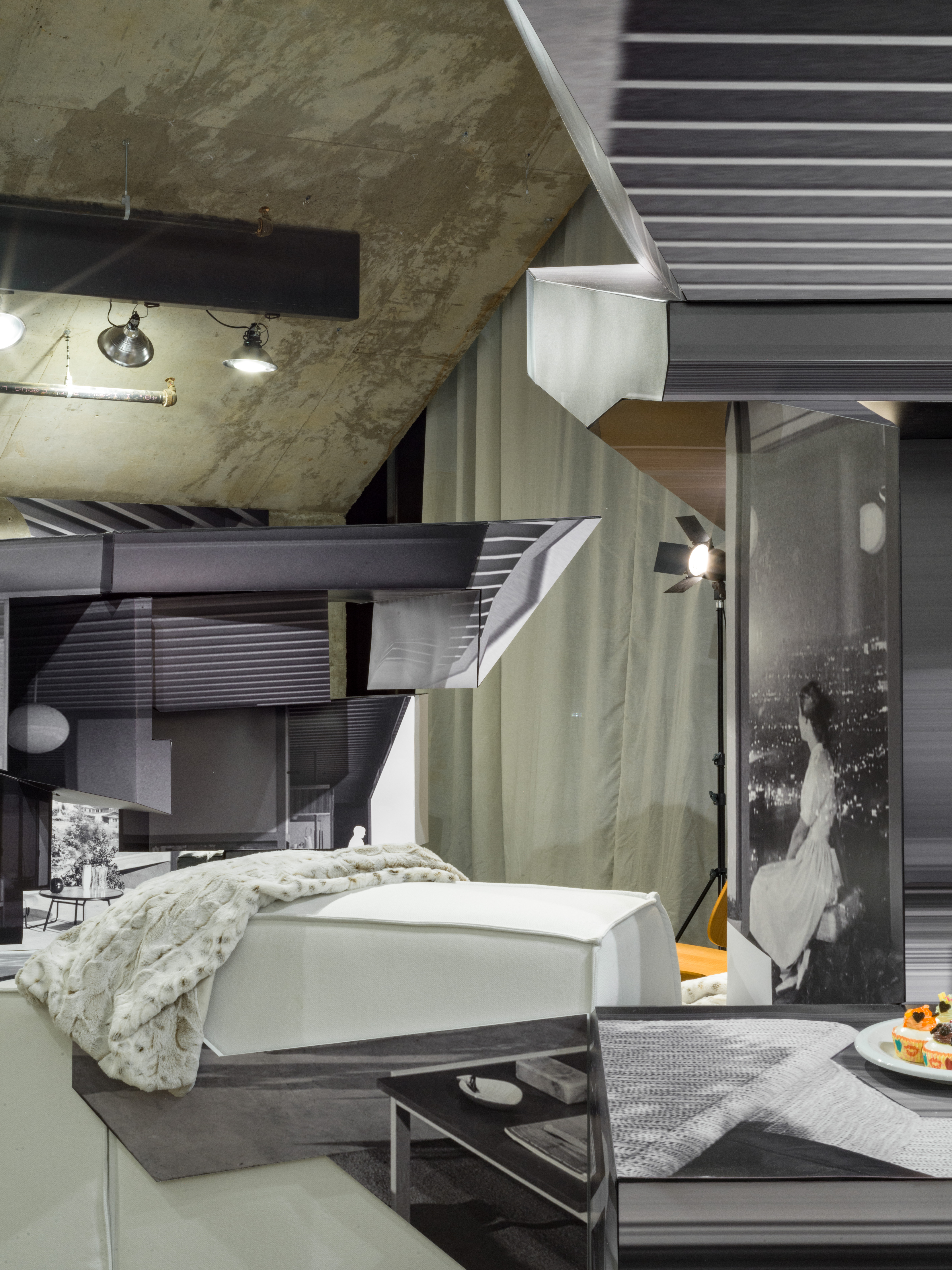
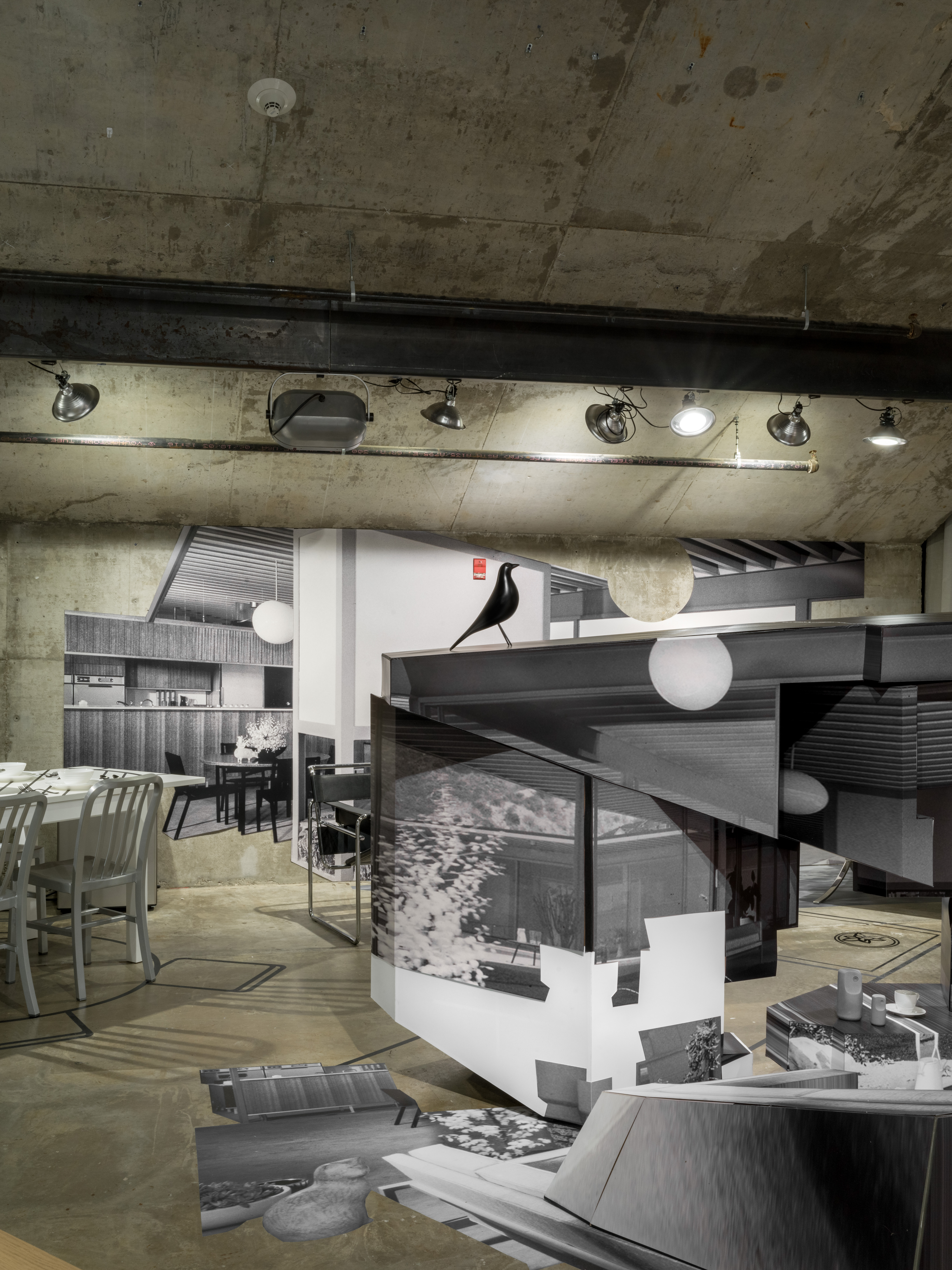
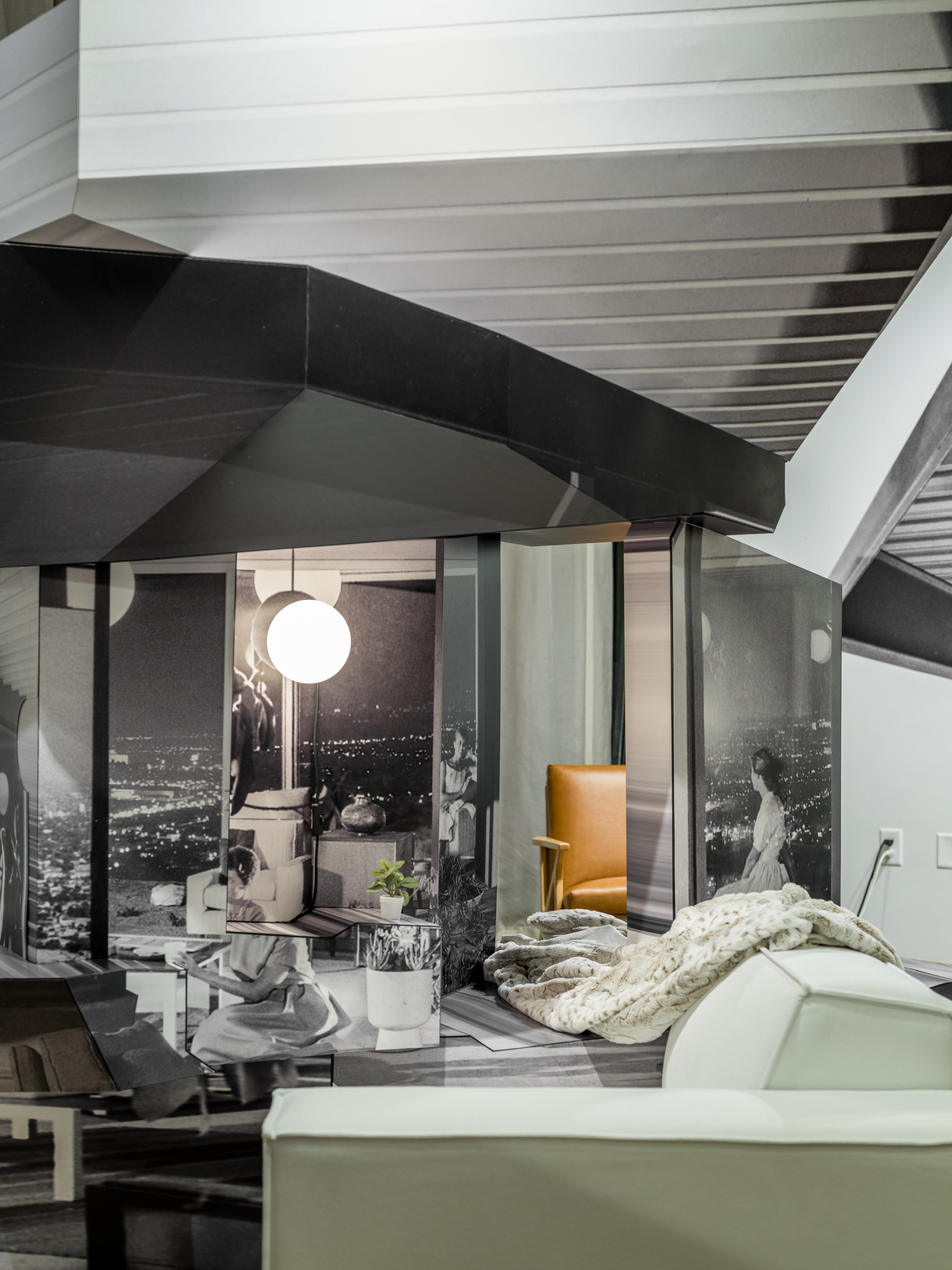

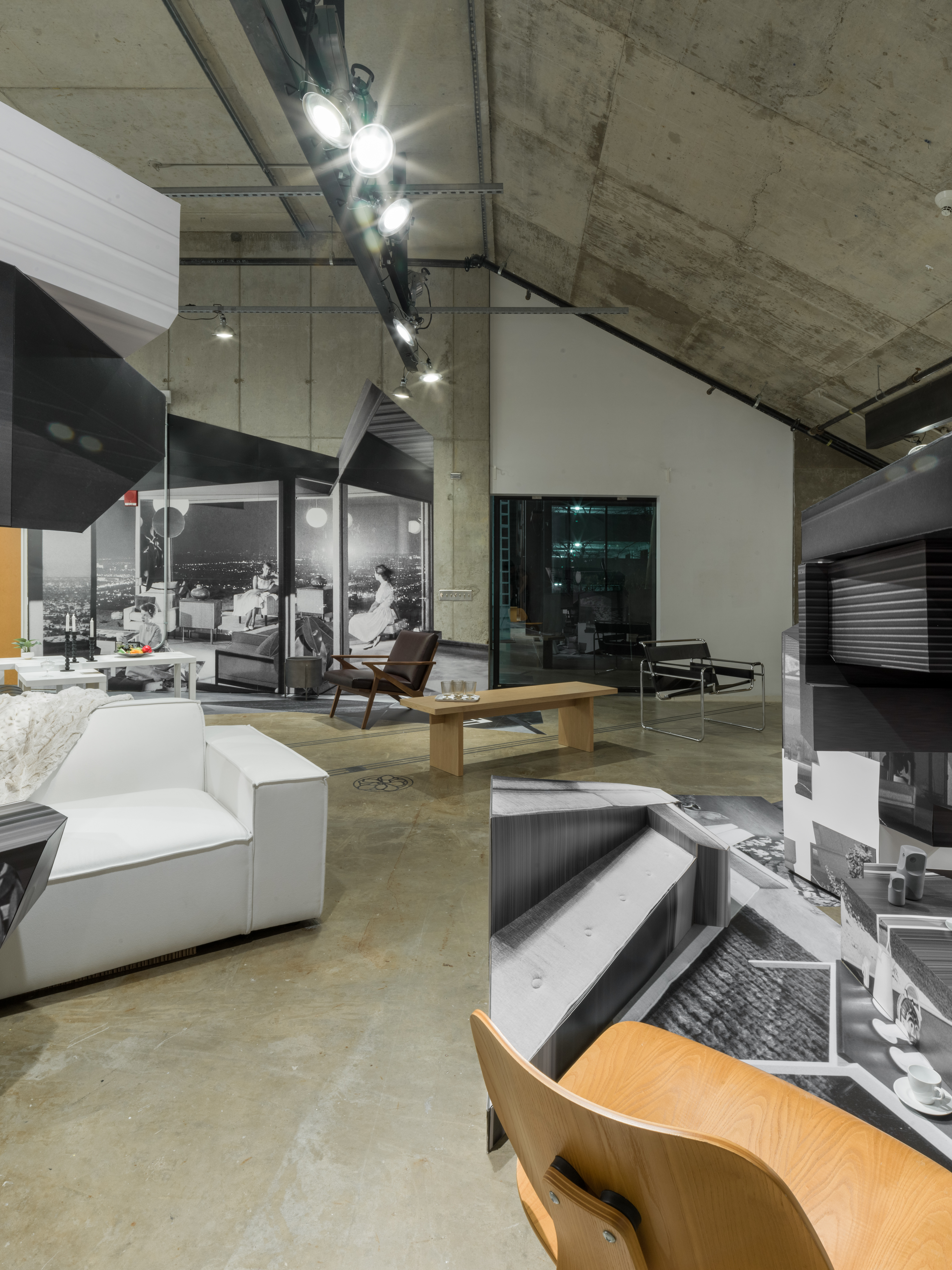
Déjà View aims to recapture the agency of the spectator. The exhibit is definitely designed to be re-photographed, despite many aspects that are specific to an in-person experience such as directly interacting with props and furniture. Visitors are encouraged to create, stage, and share their photographic compositions of the exhibition with #DEJAVIEW or the Stahl House location tag. Through corrupting the Stahl House’s digital feed, spectator photos of this exhibit further highlight the continual digital mediation of a physical presence of both the exhibit and the actual Stahl House. The aim is to (semi-seriously) corrupt the feed of the Stahl House’s location tag with this exhibition.

